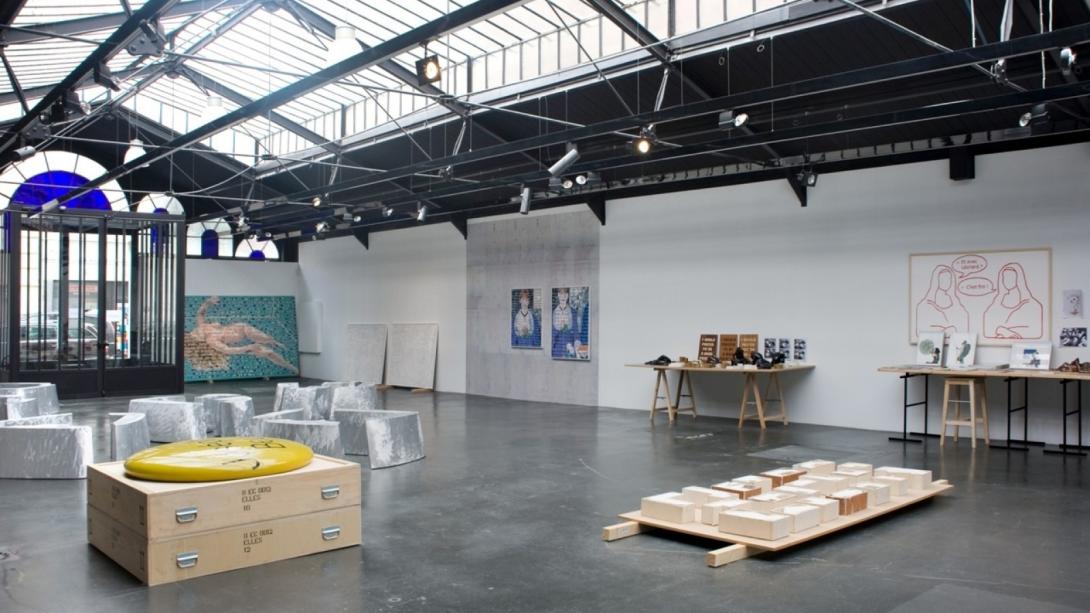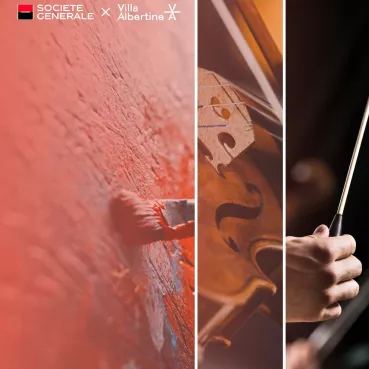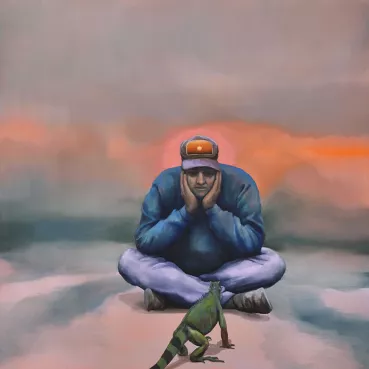
In the studio of Agnès Thurnauer
We meet the artist at her studio in Ivry. It's a large rectangular room bordered on one side by a series of wide bay windows that allow the light to stream in. The countryside spread out before her eyes is vast, cloudless and wide, punctuated by railroads that create a geometric pattern. A little suburban train passes by regularly, and though it is not heard, it marks time in its own way. And time is one of the concepts essential for understanding the work of Agnès Thurnauer. To her, time in art history is not a fixed concept but a living, fluid one in constant flux. An artwork begins to exist from the time it is viewed, whether it was finished two thousand years ago or today. It is the gaze of the viewer that animates the work, gives it life, and makes it contemporary.
As such, the Franco-Swiss artist is always contemplating and taking inspiration from the art of all eras, in all forms. "It's like I'm at Lascaux when I'm at the studio, in this room that's isolated from the rest of the world; all silences and words reach my ears acutely amplified, more naked and clear than they were at their origin. So everything can be heard, and everything can be said in painting," says this tall, slim brunette in a measured voice, taking the time to weigh her words and give them their full value. Thurnauer greets us at her reconstructed studio reached via double ladder in the Galerie Valérie Bach in Brussels. That's right – her studio is in the same space as the gallery, the place of sale.
She inserts metaphor into a play on mise en abyme, writing a palimpsest. She conjures up feminine figures from art history who enter into dialogue with each other. We spot the silhouette of Mona Lisa conferring with a friend, and we can read their confidences: "and with Leonardo?" "it's over!" We find Artemisia Gentileschi, the great female painter, holding her arm up to apply a dab of paint to a work she was unable to paint. There is also Suzanne Valadon, an artists' model (especially for Degas) before becoming an artist herself, nude and holding her paintbrush; we can almost hear an old melody in the background as she paints. Like a gigantic badge, a tondo in bright yellow resting on a pedestal indicates the presence of Josephine Beuys (the female alter ego of the famous German artist Joseph Beuys). The waitress at the bar of the Folies Bergère has also found her way here; covered with typeset text, she is still a familiar presence. Agnès Thurnauer is not summoning her forebears in painting; instead, she is inviting and dialoguing with them. They speak only of art and the places they were created.
This is why in the gallery, certain walls on which the paintings are hung have been covered with an enormous printed photograph reproducing the paint stains spattered over the white walls of the studio, making the artist's movements come alive, fleshing out the body that works and creates. The studio takes the viewer inside the secret world of creation; in discovering these places, he slips into the private life of the artist and her work. "The solitude of the studio does not distance the artist; it is all the more populated because it is isolated. It's the isolation that guarantees the presence of people," says the painter. If you happen to be in Brussels, go visit the studio of Agnès Thurnauer – you will surely feel her presence; for, as she explains it, "The spirit of an artist, her first studio, is a place of pilgrimage, confrontations and beginnings. It's a canvas in itself! It's where images come to life."
Galerie Valérie Bach
6 Rue Faider – Brussels
Agnès Thurnauer, "Studio As Performance"
Curated by Elena Sorokina
Exhibition from 24/04/15 to 26/06/15


